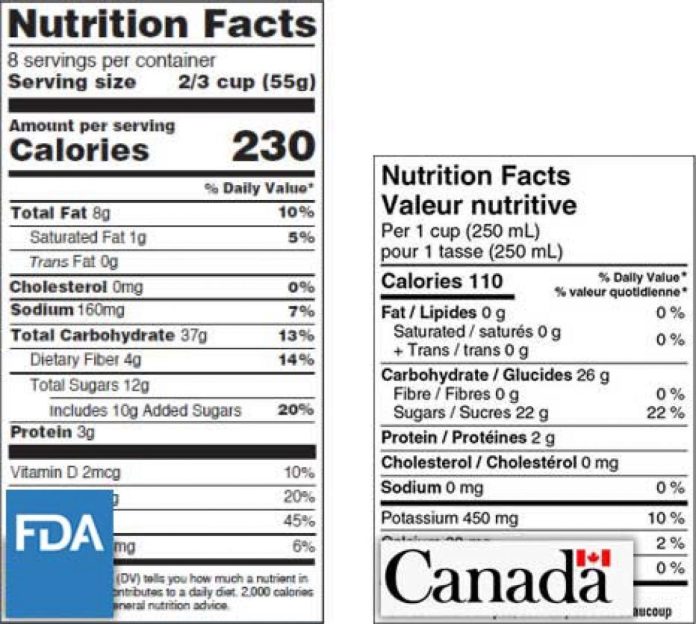In a world where supermarket shelves overflow with an endless array of food options, navigating the intricate maze of nutrition labels can feel like deciphering an ancient script. These small panels of information, often tucked away on the back of packaging, hold the secrets to our dietary choices and overall health. Yet, understanding them remains a daunting task for many. Welcome to our practical guide to reading nutrition labels, where we unravel the mystery behind these numbers and ingredients, empowering you to make informed decisions with confidence. Whether you’re a seasoned health enthusiast or a curious beginner, this guide will equip you with the knowledge to decode the fine print and transform your grocery shopping into a mindful, health-conscious adventure.
Decoding the Ingredients: Unveiling the Secrets Behind Every Label
Ever found yourself staring at a nutrition label, puzzled by the myriad of terms and numbers? You’re not alone. Understanding these labels is crucial for making informed food choices. Start by focusing on the serving size, as all the nutritional values listed are based on this amount. It’s easy to overlook, but knowing how much you’re actually consuming is the first step to unlocking the label’s secrets.
- Calories: A measure of energy. Be mindful of your daily intake to maintain or reach your desired weight.
- Total Fat: Look for the breakdown into saturated, unsaturated, and trans fats. Aim to limit saturated and avoid trans fats altogether.
- Sodium: Often hidden in processed foods, it’s wise to keep this number in check to support heart health.
- Sugars: Differentiate between naturally occurring sugars and added sugars. Opt for products with minimal added sugars.
Understanding these components can demystify the label and empower you to make healthier choices. Remember, it’s not just about cutting calories or fat; it’s about nourishing your body with the right balance of nutrients.
The Calorie Conundrum: Understanding Energy Values for Smarter Choices
Navigating the intricate world of nutrition labels can feel like deciphering a complex code. However, understanding the energy values on these labels can empower you to make more informed choices. Start by focusing on the serving size, which is often misleading. The serving size sets the stage for all the nutritional information that follows, so be sure to check if your portion aligns with it. Then, look at the calories per serving to gauge how much energy you’re consuming. It’s easy to underestimate how quickly calories can add up, especially if the serving size is smaller than your typical portion.
When examining the label, pay special attention to the macronutrients: proteins, carbohydrates, and fats. These are the building blocks of your diet, each contributing differently to your energy levels. Consider the balance of these macronutrients in your daily intake:
- Proteins: Essential for muscle repair and growth.
- Carbohydrates: Your body’s primary energy source.
- Fats: Important for energy storage and hormone production.
By understanding these elements, you can tailor your meals to meet your energy needs more effectively, transforming the way you approach food and nutrition.

Navigating Nutrients: Balancing Fats, Carbs, and Proteins for Optimal Health
Understanding how to balance fats, carbs, and proteins begins with mastering the art of reading nutrition labels. These labels are your roadmap to healthier eating, offering insights into the nutritional content of your food. When examining a label, focus on the serving size and the total calories, which can help you keep track of your daily intake. Pay attention to the macronutrient breakdown: the percentages of fats, carbohydrates, and proteins. This can guide you in aligning your food choices with your dietary goals.
- Fats: Look for foods with unsaturated fats, such as those from nuts, seeds, and fish. Limit saturated and trans fats, which can be detrimental to heart health.
- Carbohydrates: Aim for complex carbs, found in whole grains and vegetables, which provide sustained energy. Be cautious of added sugars, often hidden under different names like fructose or corn syrup.
- Proteins: Seek out lean sources, including poultry, legumes, and tofu. These help in muscle repair and growth, keeping you satiated for longer periods.
Equipped with this knowledge, you can make informed choices that support your health objectives, ensuring a balanced intake of essential nutrients without the overwhelm.

Spotlight on Sugars: Identifying Hidden Sweeteners in Everyday Foods
When scanning the nutrition labels of your favorite foods, it’s easy to miss the myriad of sweeteners that might be lurking within. These sugars often hide under names that don’t immediately scream “sugar.” Familiarize yourself with terms like high fructose corn syrup, maltose, dextrose, and sucrose. Recognizing these ingredients can help you make informed decisions about your sugar intake.
- Natural vs. Added Sugars: While natural sugars are found in fruits and dairy, added sugars are those incorporated during processing or preparation. Look for terms such as cane juice, fruit juice concentrates, or agave nectar.
- Check the Ingredients List: Ingredients are listed by quantity, from highest to lowest. If a sweetener appears among the first few ingredients, the product is likely high in sugar.
- Be Aware of Serving Sizes: Nutrition facts are based on specific serving sizes. A seemingly small amount of sugar can add up if you consume multiple servings.
By becoming a sugar detective and scrutinizing these labels, you empower yourself to make healthier choices. With practice, you’ll quickly spot hidden sweeteners and be able to enjoy your meals without the unexpected sugar spike.
Concluding Remarks
As we conclude this practical journey through the intricate world of nutrition labels, remember that each packaged item is more than just a product on a shelf—it’s a story waiting to be told. By mastering the art of reading these labels, you empower yourself to make informed choices that align with your health goals and personal values. Whether you’re striving for a balanced diet, managing specific dietary needs, or simply curious about what you’re consuming, the knowledge you’ve gained serves as your compass. So, the next time you find yourself in the aisles of a grocery store, take a moment to pause, decode, and decide. In this way, you transform each meal into a mindful moment of nourishment and well-being. Here’s to making every bite count!


































